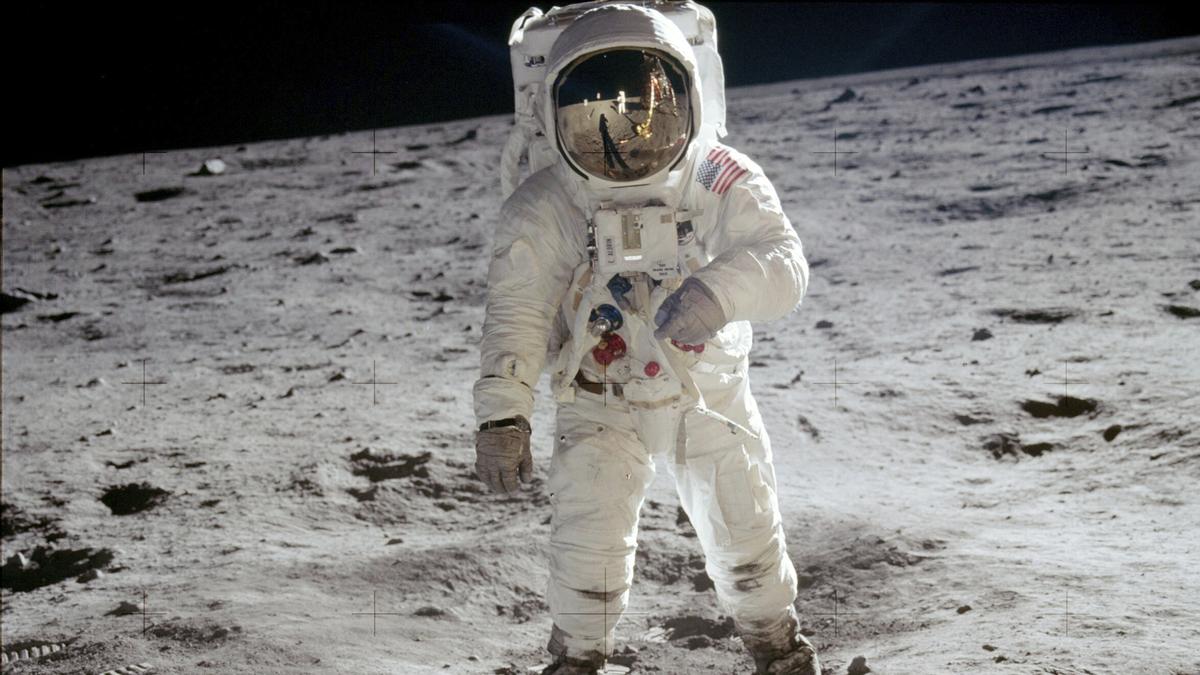Fil photo shows reflections of astronaut Neil Armstrong, the U.S. flag, the lunar module and a television camera in the face mask of astronaut Edwin “Buzz” Aldrin when his picture was made by Armstrong as they walked across the surface of the moon, July 20, 1969.
| Photo Credit: Neil Armstrong/NASA via AP
(This article forms a part of the Science for All newsletter that takes the jargon out of science and puts the fun in! Subscribe now!)
You wake up, brush, shower, dress up, grab breakfast, put on your shoes, and step out. It’s a new morning and the sun is up, so you take a deep breath — and the city air serves you a gross reminder of why it’s become a terrible idea to take deep breaths. Suddenly you’re coughing, tearing up, and sneezing. Your nose rapidly becomes blocked.
This is perhaps the least of what city dust does to the human body. The particulate matter smaller than 2.5 micrometres, or PM2.5, in particular has been linked to a variety of medical conditions, including those affecting newborns and reducing human lifespan.
Unfortunately for you, even if you move to a moon base in future, you’d be ill-advised to take a deep breath of your cabin’s air if it has moondust suspended in it.
According to a study published recently in Life Sciences in Space Research, moondust is less harmful than the particulate matter we frequently encounter on the earth. However, both our urban dust and moondust seem capable of damaging certain lung cells.
The study’s authors, from institutes in Macquarie Park, Sydney, and Ultimo in Australia, used two laboratory-generated versions of lunar dust — called LMS-1 and LHS-1, mimicking dust from the moon’s mare and highland regions, respectively — in their experiments.
During NASA’s Apollo missions from 1969 to 1972, astronauts complained of lunar dust sticking to their spacesuits and irritating their eyes and lungs. Lunar dust is statically charged, so it tends to stick to surfaces the same way a balloon rubbed against hair will cling to a wall right after.
The researchers used two groups of cells to represent the bronchial and the alveolar parts of human lungs. The bronchi transport air into the lungs while the alveoli are the sacs where the air exchanges oxygen with the blood.
The researchers found that large particles from both LMS-1 and LHS-1 moondust were toxic and inflammatory only at extremely high concentrations. The smaller particles in both dust types that a human could breathe deep into the lungs were found to be less toxic to bronchial cells than PM2.5 particles on the earth are known to be.
This said, both the moondust simulants and earth dust caused alveolar cells to die.
The study is important because space agencies like NASA in the U.S. and CNSA in China are planning to send astronauts to the moon. NASA’s Artemis II mission is currently scheduled for 2026 and will carry four astronauts in a lunar flyby mission as an early step to “long-term return” to the natural satellite.
In future, as the human population on the moon builds up, both engineers designing and operating lunar habitats and medical workers expected to attend to the people inhabiting them will gain by understanding how moondust affects the human body.
From the Science pages
Question Corner
Flora and fauna
Published – July 02, 2025 12:08 pm IST
